Content
Equations of Kinematics
Constant Situations
Constant Position
Constant Velocity
Constant Acceleration
Equations of Kinematics
Examples
Example 1
Example 2
Example
3
Equations of Kinematics
From the definitions of position, displacement, velocity, and acceleration, there exists a set of relationships between these quantitise. For simple regular motions, there are some basic equations of kinematics to calculate the unknown quantity from the known quantity.
Constant Situations
Simple motions with constant situations can be used to derive basic equations of 1D kinematics.
Constant Position
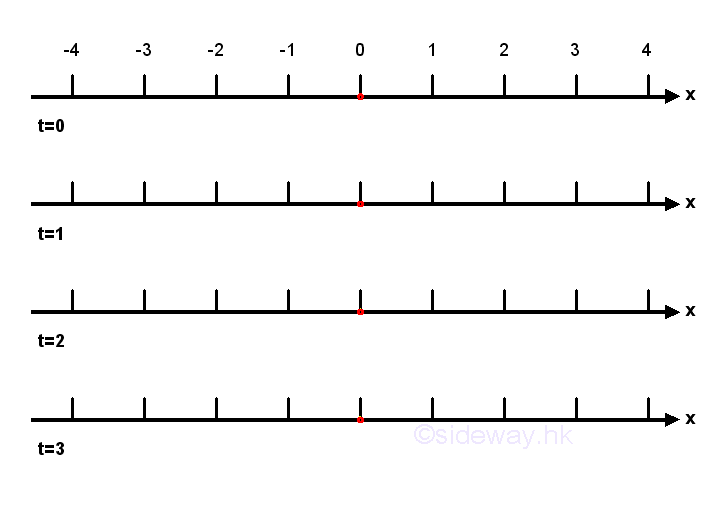
An object does not have any motion when the object is maintained in constant position. Since the object does not move, the velocity of the object must be equal to zero. And since the velocity does not change, the acceleration must be equal to zero also.
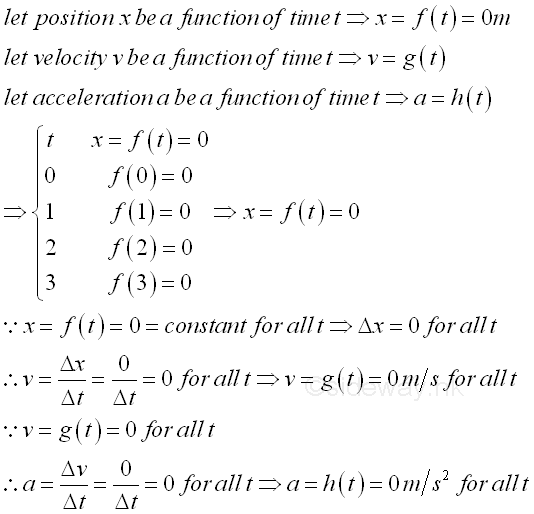
Constant Velocity
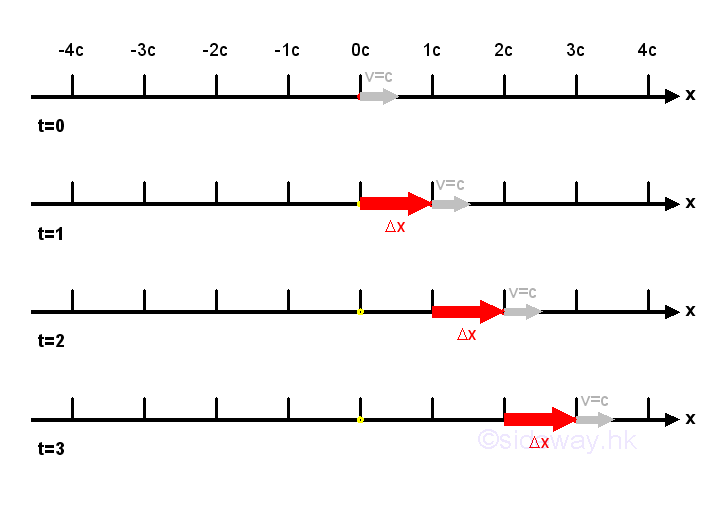
When an object is maintained in constant velocity, the object moves by the same distance in same direction during each equal time interval. As the object moving in constant velocity, the displacement between each interval is equal to a constant, the position of the object is changed in a regular manner and can be determined by the definition of velocity accordingly. Since the object moves constantly, the motion is called uniform motion and the acceleration is equal to zero.
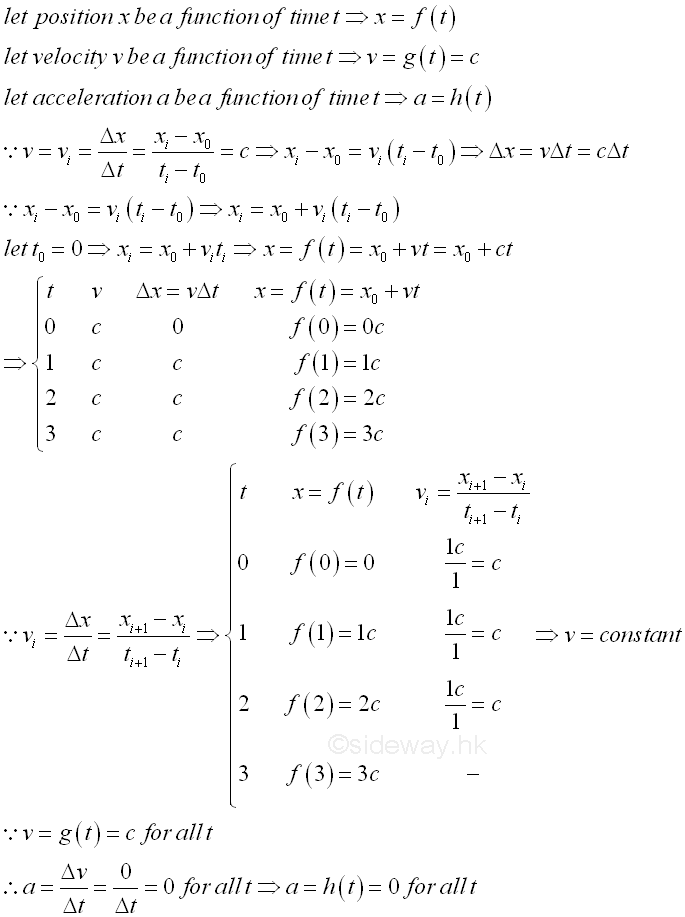
Constant Acceleration
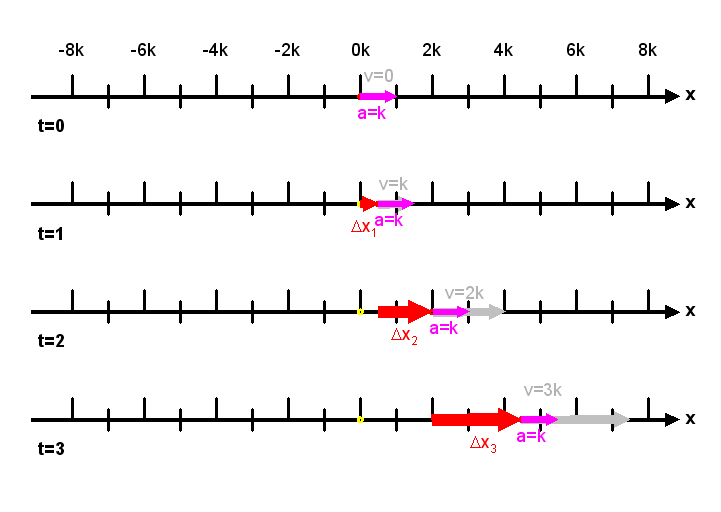
When an object is maintained in constant acceleration, the object changes the same amount of velocity in same direction during moving in each equal time interval. As the object moving in constant acceleration, the changes in velocity between each interval is equal to a constant, the velocity of the object is changed in a regular manner and can be determined by the definition of acceleration accordingly. Since the object accelerates constantly, the motion is called uniform acceleration motion and the acceleration is equal to a constant.
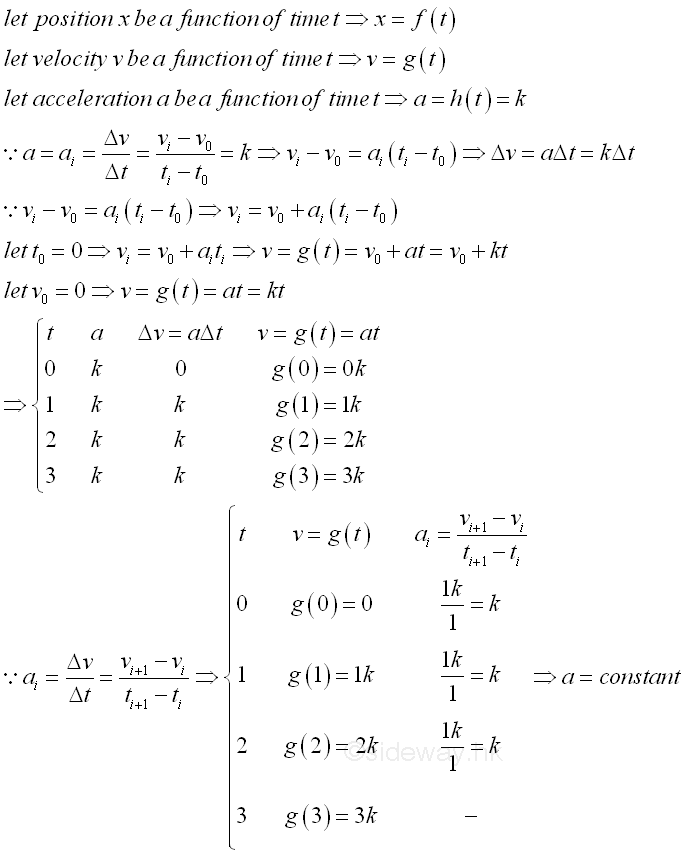
Under constant acceleration, the velocity of an object changes linearly with time. Since the velocity of the object varies with time, the object does not move the same distance during each equal time interval. Instead, the position of the object changes more rapidly as a function of time. Since the velocity of an object changes linearly with time, both the final velocity of the object in each time interval can be determined if the initial velocity of the object is known and the average velocity of an object in each time interval can then be obtained from the average of initial and final velocity also. And the displacement for each time interval can also be determined by the definition of average velocity accordingly.
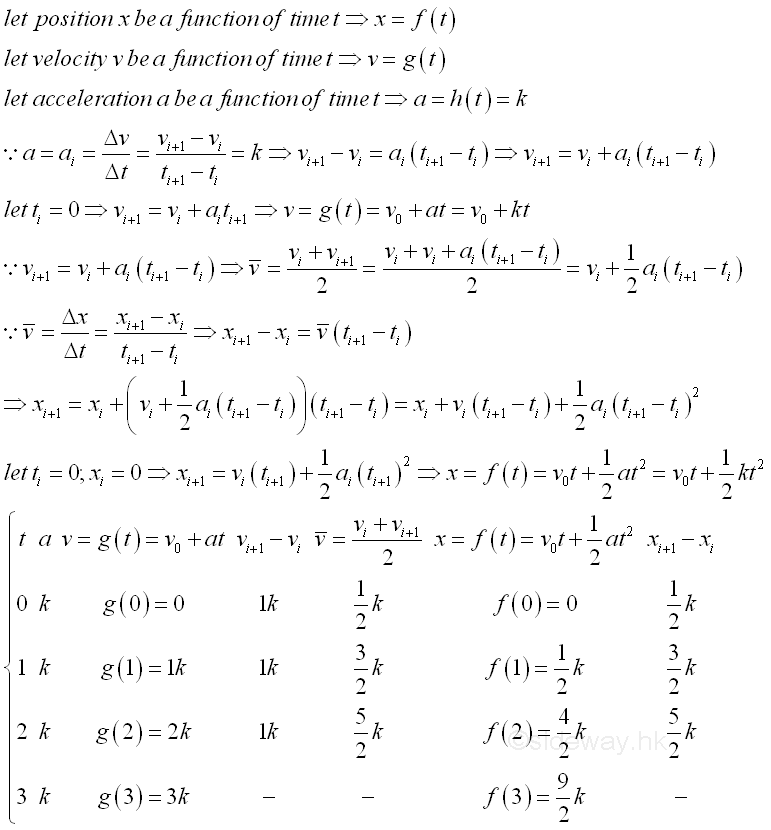
If initial velocity of an object is equal to zero, then the displacement of the object is proportional to the sqaure of the time interval and is equal to at2/2.
Equations of Kinematics
From the constant situations, equations of kinematics are derived to calculate unkown quantity for the motion of an object with constant acceleration as following.
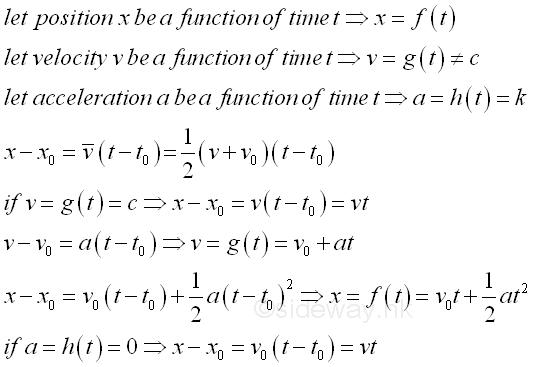
From the first two equations of kinematics, there is a common term (t-t0) that can be eliminated. Therefore another equation of kinematics can be derived.
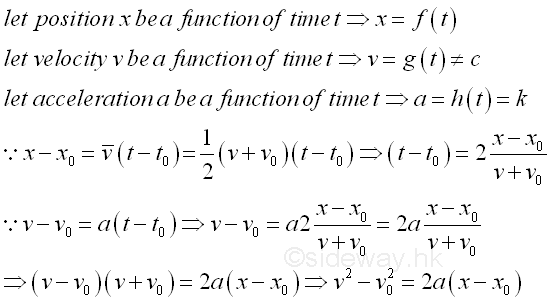
For the case of constant acceleration, the four equations of kinematics are.
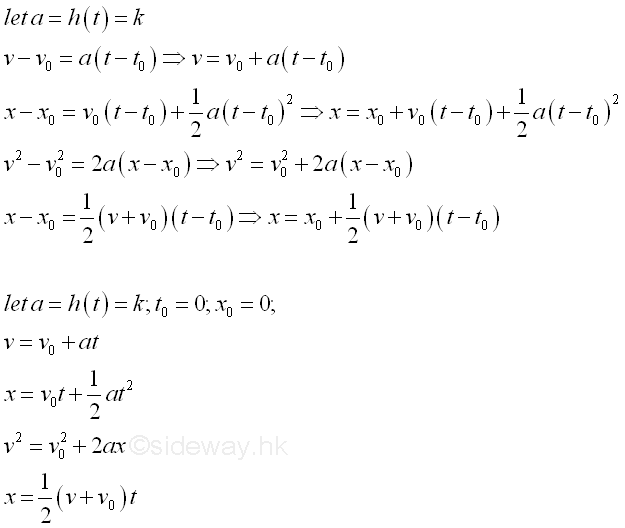
Examples
Example 1
A car travels from position A to position B with a speed of v1m/s and then returns from position B to position A with a speed of v2m/s. The average speed for the whole journey is
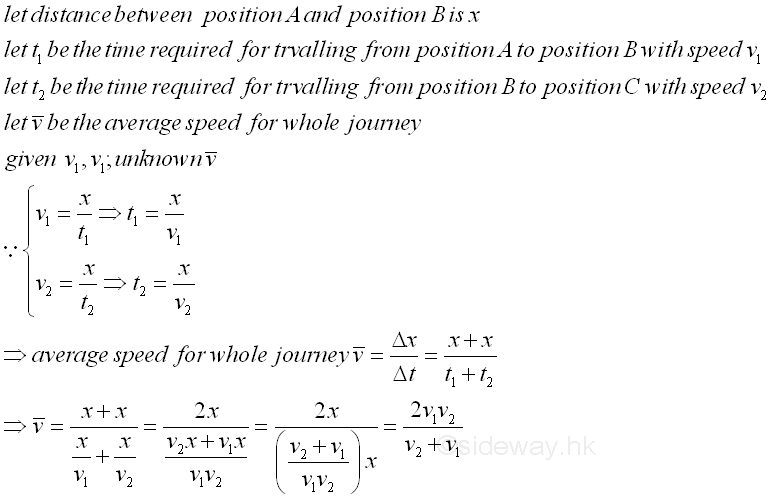
Example 2
A car travels from position A to position B with initial speed of v1m/s and the car has slowed to a speed of v2m/s after t seconds later. The travelled distance is
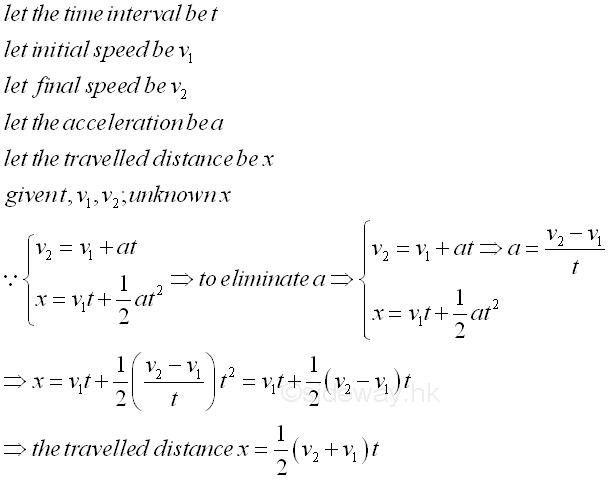
Example 3
An object falls from a x m high cliff with initial speed v1m/s downward. Air resistance may be ignored, so the object is in free fall. What is the speed and distance travelled after t s? And what is the magnitude of the velocity of the object when touching the ground? For free fall, the acceleration can be assumed to be equal to g=9.8m/s2 downward.
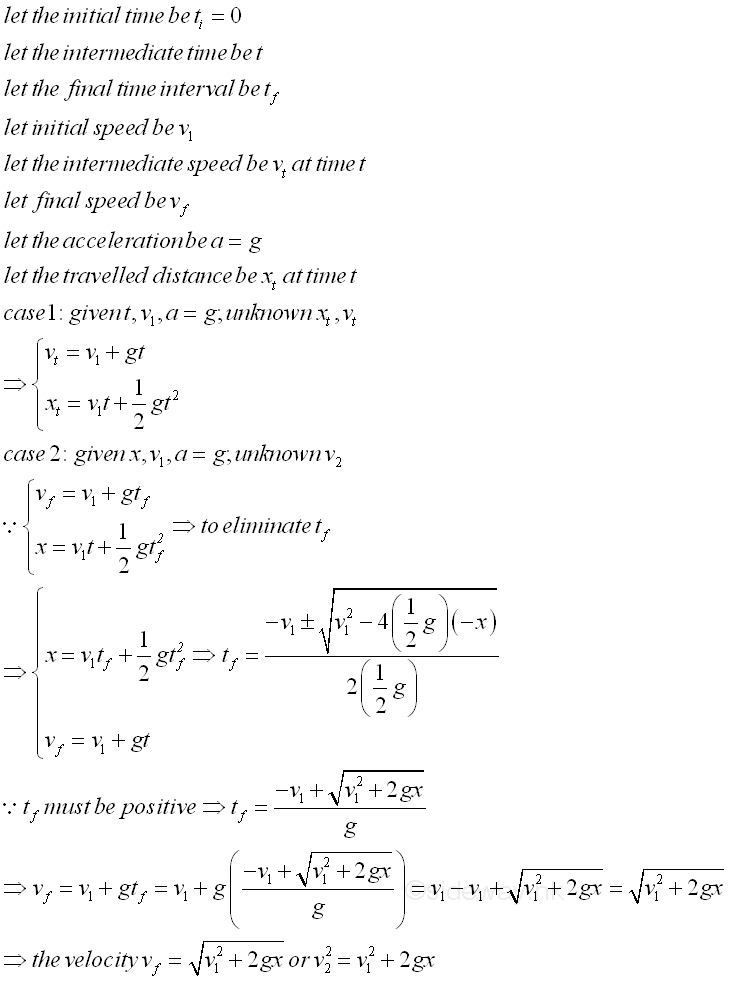
©sideway
ID: 140200007 Last Updated: 2/7/2014 Revision: 0 Ref:
References
- I.C. Jong; B.G. rogers, 1991, Engineering Mechanics: Statics and Dynamics
- F.P. Beer; E.R. Johnston,Jr.; E.R. Eisenberg, 2004, Vector Mechanics for Engineers: Statics
Latest Updated Links
- Travel Singapore Sight(last updated On 12/6/2025)
- Travel Singapore Rail Network(last updated On 12/5/2025)
- Travel Singapore Things to Know(last updated On 12/4/2025)
- Travel Singapore(last updated On 12/3/2025)
- Legrand Galion(last updated On 12/2/2025)
- Schneider Electric AvatarOn(last updated On 12/1/2025)
- Alfalux(last updated On 11/30/2025)
- Novabell(last updated On 11/29/2025)
- TownGas NJW12RM1(last updated On 11/28/2025)
- SamSung 42" OLED TV S90F 4K(last updated On 11/27/2025)
- Tefal KI7208 GLASS VISION KETTLE(last updated On 11/26/2025)

 Nu Html Checker
Nu Html Checker  53
53  na
na  na
na
Home 5
Business
Management
HBR 3
Information
Recreation
Hobbies 9
Culture
Chinese 1097
English 339
Travel 22
Reference 79
Hardware 54
Computer
Hardware 259
Software
Application 213
Digitization 37
Latex 52
Manim 205
KB 1
Numeric 19
Programming
Web 289
Unicode 504
HTML 66
CSS 65
SVG 46
ASP.NET 270
OS 431
DeskTop 7
Python 72
Knowledge
Mathematics
Formulas 8
Set 1
Logic 1
Algebra 84
Number Theory 206
Trigonometry 31
Geometry 34
Calculus 67
Engineering
Tables 8
Mechanical
Rigid Bodies
Statics 92
Dynamics 37
Fluid 5
Control
Acoustics 19
Natural Sciences
Matter 1
Electric 27
Biology 1
